
This is the true cost of your cruise holiday
As our autumn nights get colder and darker, it’s easy to find ourselves dreaming of our next summer vacation. Booking a cruise seems like the perfect option to experience new cities, cultures and cuisines. But have you considered the true cost of your cruise holiday?
On the surface, a cruise seems like one of the best ways to see many foreign destinations, easily and in a short amount of time. Itineraries call at major cities which are often advertised as regional highlights. This means you don’t have to do the research on the best places to visit in an unfamiliar destination. Waking up to a new place every day with your itinerary all organised for you? Cruises seem like the epitome of a worry-free holiday.
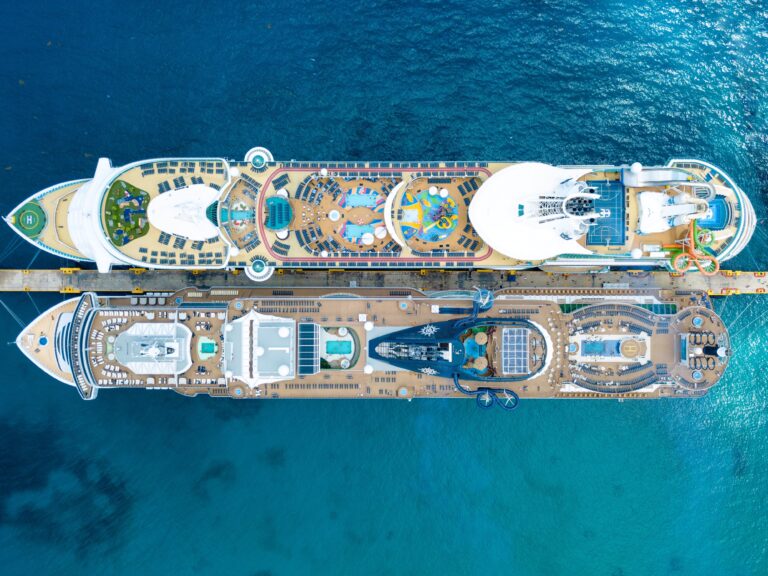
Cruise travel is big business. Over 27 million people took a cruise in 2019 and this number is rising each year. But as the cruise industry is growing, so is its environmental impact. Dive deep below the surface and you come across all sorts of problems. Your cruise holiday might not be as worry-free as you thought. Read on to find out the true cost of your cruise trip.
Time for some cold, hard facts. Your carbon footprint triples in size when taking a cruise. If cruise ships were a country, they would be the earth’s seventh biggest polluter. And the emissions from these ‘floating cities’ contribute to serious health and environmental issues.
If that wasn’t enough cruise ships often discard their waste, fuel, and rubbish into our oceans. This directly harms our marine ecosystems, killing and injuring the animals that share our seas.
It seems we’re all worried about the environment on some level. Whether you’re concerned about global warming and rising sea temperatures, bothered about biodiversity loss, or anxious about the poor creatures that get tangled in our waste plastic, the current state of the environment affects all of our lives.
But how does the cruise industry contribute to these issues?
There’s no doubt about it, the true cost of your cruise holiday is huge. Here we discuss the effect of cruise ships on the environments. and communities they visit. We’ll also talk about how you can minimise your environmental footprint if you do opt for a cruise holiday.
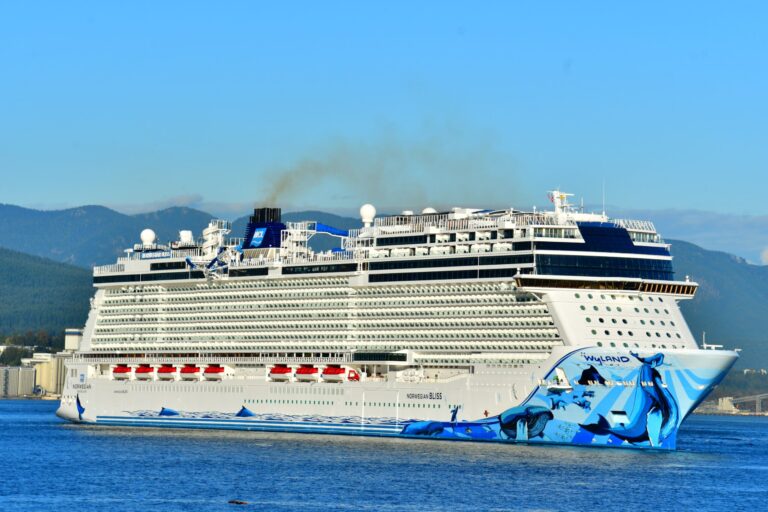
Cruise Ship Contribution to Global Warming
Cruise ships emit carbon dioxide and dangerous particles. This is caused by the quantity and quality of the fuel they use. Scientists have estimated that cruise ships can emit the same level of emissions as 700 trucks, or a million cars per day.
However, unlike cars and trucks, most of these ships do not have any filters or converters to clean the exhaust. Scientists have observed the same levels of pollutants surrounding cruise ships as you would expect to see coming from the most polluted cities in the world.
Cruise exhaust emissions also contain high levels of nitrogen oxide. Scientists have linked this to acid rain, some cancers and increased respiratory disease. The environmental cost of this is evident, with increased health problems in major UK port cities, such as Southampton and Liverpool. Passengers and staff have also reported an increase in respiratory illnesses!
Both carbon dioxide and nitrogen oxide are huge contributors to global warming. The true cost of your cruise is looking pretty high already. Cruise travel is endangering human health and contributing to rising temperatures and sea levels on our planet.
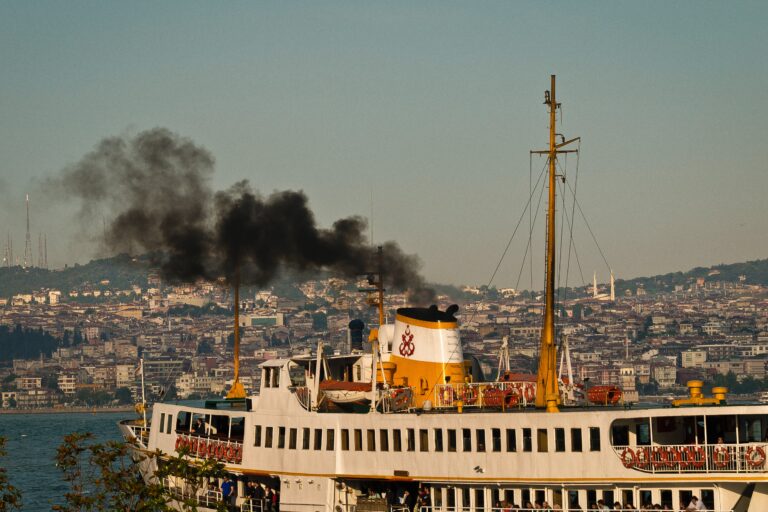
Ocean Pollution
Fuel
Cruise ships usually use heavy fuel oil in their engines. This is the leftover product from petrol and diesel production and is the dirtiest (and cheapest!) fossil fuel available. It contains high levels of sulphur oxides, dangerous air pollutants.
In January 2020, the International Maritime Organisation required ships to use cleaner and fuel. Safer fuel is more expensive due to the processing required to remove contaminants. So, in order to meet environmental standards, cruise ships ‘wash’ cheap fuel as required by law. The fuel they are using to sail technically does have less pollutants.
This sulphurous waste is so toxic that it would be illegal to just discard in a landfill. To circumvent costly waste disposal fees which require specialist facilities, many cruise companies just discharge these pollutants directly into the ocean instead.
Approximately 455 million litres of petroleum products from cruise ships seep into our oceans every single year. To put that into perspective, that’s 180 Olympic-sized swimming pools-worth of waste fuel flooding into our oceans and harming our marine ecosystems.
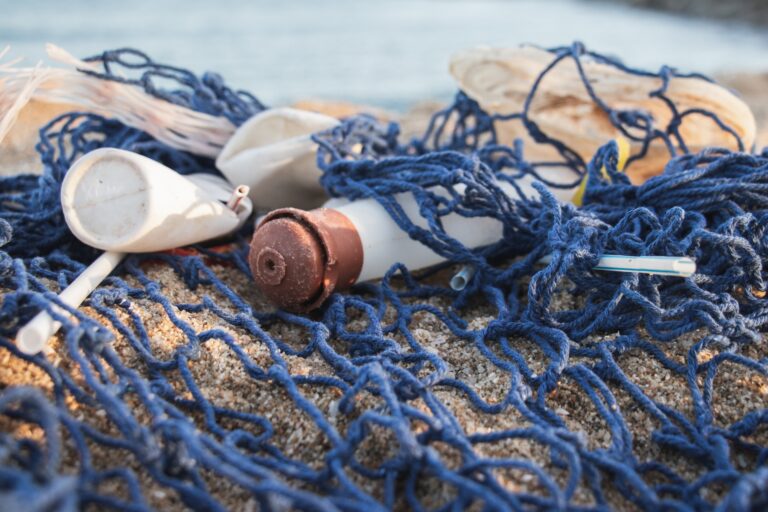
Solid Waste
On average, a cruise ship passenger generates around 1kg of litter per day and disposes of two bottles and two cans. With some ships carrying upwards of 3000 passengers, this waste soon adds up.
A minimum of 75% of this is incinerated on board and, like everything else, the ash is discharged into our oceans. This ash often contains microplastics, which can alter the feeding behaviour of fish, turtles, and birds, sending signals to their brains that they are ‘full’ and driving many to starvation.
The same creatures can also be injured from becoming entangled or choking on larger pieces of plastic and other solid waste as this is not always completely incinerated. Whilst you’re lounging by the poolside sipping on a cocktail, the true cost of your cruise holiday is all the plastic straws littering the ocean and choking marine life.
Liquid Waste
A large cruise ship on a one week voyage is estimated to generate a million litres (or 10 swimming pools) of human sewage and almost five times as much greywater (wastewater from sinks, baths, laundry etc) per week.
What goes in must come out, and there are no prizes for guessing where this waste ends up. Like everything else, it’s discarded straight into our coastal and ocean waters to float with the fish.
Cruise ships can legally dump human waste directly into the water as long as it is at least three miles from shore. This leaves behind contaminants such as bacteria, heavy metals, and nutrients that can upset the balance of our ocean ecosystems.
Greywater contains nitrogen and phosphorus that promote excessive algal growth. Algae excessively consume oxygen in the water for photosynthesis, which in turn destroys aquatic life, including fish and coral. In 2013, algal blooms were the cause of death for more than 150 manatees along Florida’s coast.
In addition to damaging the ecosystem, these contaminants pose a huge risk to public health. The heavy metal particles can bioaccumulate in our food supply, getting into fish and shellfish beds. Contaminants also end up being ingested by surfers, beachgoers, and even children paddling in the ocean. In 2006, there were 25’000 closures of Ocean, Bay and Great Lake Beaches in the US alone, due to high levels of fecal contamination from untreated sewage.
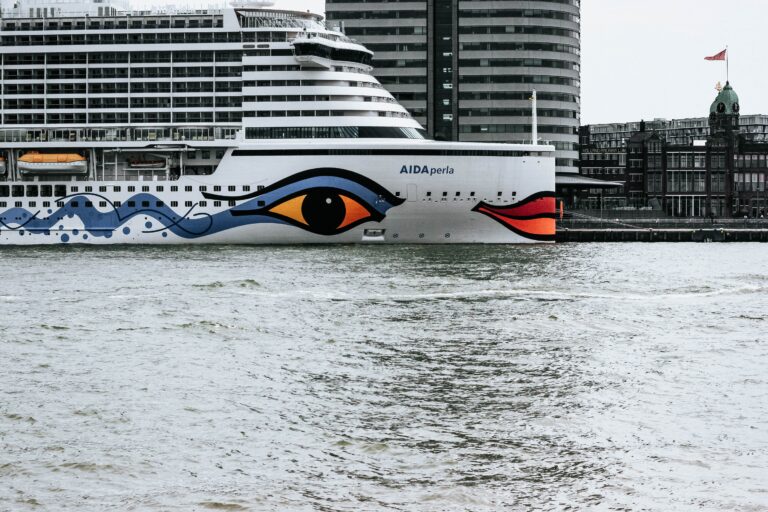
Economic Effects of Cruise Tourism
Many countries and cities around the world rely on tourism. Cruises bring tourists to splash the cash when they dock, contributing to local economies. That’s got to be a good thing, right?
Well, not quite. Cruise packages are often all-inclusive. To put it simply, tourists who have paid for their bed and board in advance have no desire to hire local guides, eat at local restaurants or pay entry fees for cultural and heritage sights in the cities they dock in.
With such a short time in port, most passengers opt for the pre-organised tour packages offered by the cruise company to make the most of their short visit. More than 50% of land-based activities are sold on board, however, local tour operators receive less than a 25% cut of the value paid by cruisers.
And it gets worse. As we’ve just established, most cruise tourists do little to contribute to the local economies. But the mass increase in tourism drives up the prices of food, transport, and accommodation for locals too.
Cities are dwindling away. Residents are relocating, unable, or unwilling to pay the costs caused by cruise ships. Will these cities become empty of life, too much of a tourist theme park for locals to want to live there?
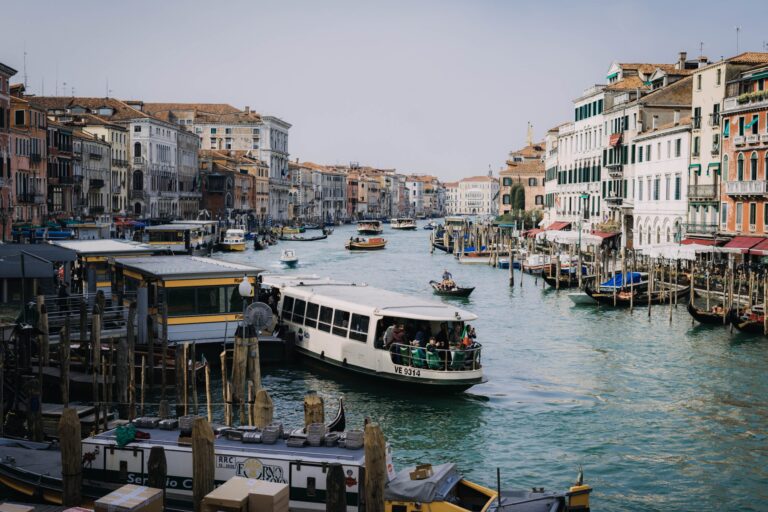
Damage to Tourist Hot-Spots
Of course mass tourism is a problem across the whole travel industry but cruise ships are a huge contributor. Cruise ships pull into ports, carrying the equivalent of a small town directly into some of the world’s most beautiful and vulnerable places. They unload thousands of tourists in popular destinations like Santorini, Venice and Dubrovnik every year.
The delicate historical infrastructures of these beautiful cities simply cannot cope with the number of tourists cruise ships bring. For example, Venice, a city of 54,500 residents, receives 30 million visitors a year, of whom many are grab-and-go day-trippers.
Many of these tourists have poured off a cruise ship – on some days as many as 44,000 cruise passengers visit Venice. They stick to the famous landmarks, concentrating numbers into a tiny footprint. This damages Venice’s fragile buildings, strains its infrastructure and inhibits local people from going about their business.
Most stay for just a few hours, see little, buy a few trinkets and leave. They bring no economic benefit to the city in this way and the sheer volume of people makes visiting Venice a miserable experience. No one benefits, not even the tourists.

Still want to take that cruise? Here’s how to minimise your environmental impact.
Can a cruise ever be green? If you’re looking for a low impact, sustainable holiday, cruising probably isn’t for you. But if you still want to take that holiday, check out our tips below to minimise the true cost of your cruise.
Choose a greener cruise line:
Choosing a less-sustainable holiday doesn’t mean you can’t reduce your environmental footprint whilst you’re there. When you’re onboard a ship you’re totally reliant on your cruise company. So you should opt to choose a green one!
But how do you know how ‘green’ a cruise is? The 2020 Cruise Ship Report Card lets you decide which cruise to take based on a cruise ship or cruise line’s environmental and human health impacts. This would be a great place to start.
Keep your waste to a minimum
Recycle wherever possible, don’t bring rubbish onto the ship when you could dispose of it onshore, and definitely don’t throw anything overboard. Pack your own soap and shampoo instead of going through dozens of the miniature complimentary toiletries onboard.
Reduce plastic usage
Bring a refillable water bottle so you don’t have to buy disposable plastic bottles, avoid using straws when you’re at the bar, and pack a reusable shopping bag or backpack to take with you when you dock.
Reduce energy consumption
Turn the lights off in your cabin when you’re out, make sure you unplug your chargers when they’re not being used, and avoid using the air con. Using less energy helps minimise the true cost of your cruise – if everyone did this it would be great.
Reduce water usage
Take shorter showers and try to reuse your bedsheets and towels, especially around the pool. Instead of helping yourself to fresh towels each day, try to keep hold of one instead of leaving it and picking up another later. Remember, all the water you use on board is getting pumped directly into the oceans!
Think local
When you dock and disembark for a day’s adventures, think local. Do your research and find a local tour operator instead of using the cruise company. Eat at a restaurant, buy ice cream, or shop for a souvenir from a local vendor. These little businesses will benefit greatly from your support.
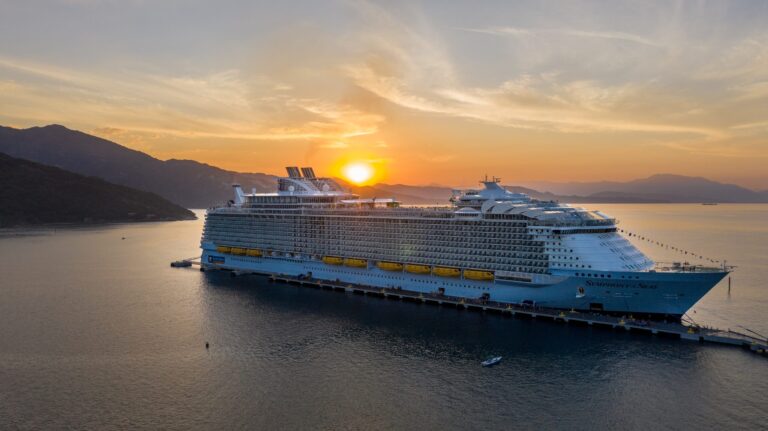
The cruise industry is so competitive that companies are feeling the need to distinguish themselves to attract more customers. There’s a particular up-and-coming market trying to attract millennial cruisers, with yoga, vegan options, and improvements to wifi on board.
The more pressure cruise companies get from customers to improve sustainability and environmental standards, the more important these issues will become, and hopefully, the cruise industry’s environmental record will improve.
I’m biased because travelling by cruise liner would not be my cup of tea at all. We prefer a more personal and cultured experience and fully embrace slow travel, getting to know a location in all its beauty.
The longest ‘cruise’ I’ve ever been on was an overnight on a boat in Ha Long Bay, Vietnam. And I wish we could have stayed longer! The average docking time in port for a cruise ship is five to nine hours which is barely enough to scratch the surface of a city, let alone say you’ve seen a country. How can you truly enjoy all a city has to offer if you only visit long enough to snap some photographic proof that you’ve been there?
Regardless of my personal opinion, I can’t help thinking that the environmental negatives of cruise ships outweigh the positives. Is cruise tourism ruining the beautiful places on this planet for the rest of us? After conducting this research, my answer is still yes.
Disclaimer: The information and advice provided in this blog are the author’s opinions and based on their personal experiences. All information was accurate at the time of writing. However, things can change quickly, so always double-check current conditions and guidelines before setting out. Remember, your travels and safety are your own responsibility, and this blog can not be held responsible for anything that might happen on your adventures! Always exercise caution and good judgment. Oh, and don’t forget to get travel insurance! Happy travels!
This post may contain affiliate links (yay for transparency!) This means that I will earn a small commission, at no additional cost to you, if you click the link and choose to buy the product. I only link to stuff I have personally bought and found useful and never endorse crap. Your support helps keep the site going, thank you!
Alice
Alice is a UK travel blogger who advocates sustainable travel and being more eco-conscious on a budget. She loves coffee, her houseplants and summiting mountains.
You May Also Like
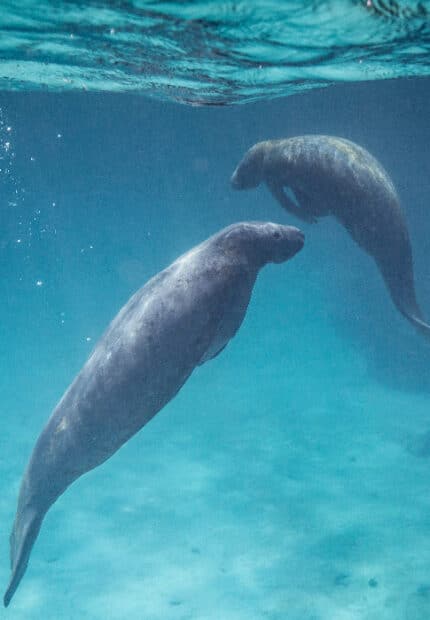
Swim with manatees in Belize: Everything you need to know before you go [2024]
January 13, 2024
How to be an Elephant-Friendly Tourist in Nepal [2023 Update]
March 7, 2023